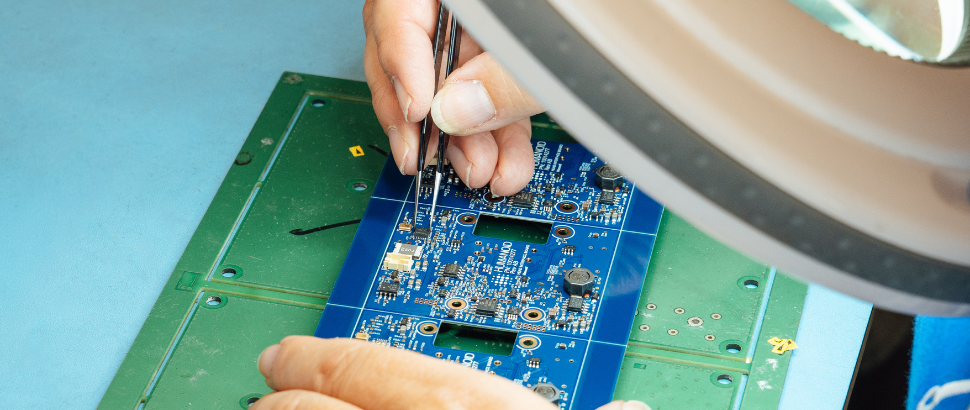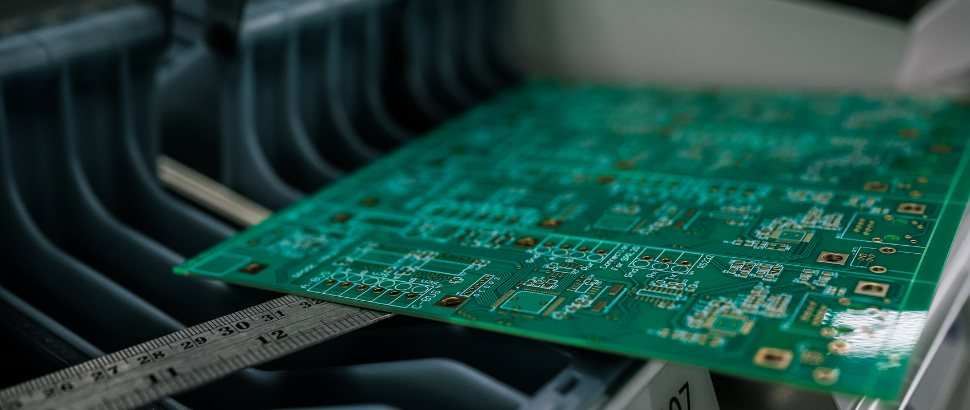News, Blogs & Articles

Box Build vs PCB Assembly: When Does In-House Integration Make Sense?
Case Study
November 19, 2025
You've had your PCBs manufactured and assembled. Now you need them integrated into enclosures with power supplies, cabling, displays, and mechanical components to create finished products. The question isn't whether you could handle this final integration internally; it's whether you should.
For most companies, the economic and operational advantages of complete box build services far outweigh any perceived benefits of internal integration. Here's why splitting your electronics manufacturing rarely makes commercial sense.
What Is Box Build Assembly?
Box build goes beyond PCB assembly to create complete, functional products ready for end users. It typically includes:
Mechanical Integration
- Installing PCBs into enclosures or chassis
- Mounting components like fans, heatsinks, or brackets
- Securing hardware with appropriate fasteners
Interconnection
- Cable harness assembly and routing
- Connector installation and termination
- Wire management and strain relief
System Integration
- Power supply installation and connection
- Display or interface panel mounting
- Sensor or peripheral device integration
Final Testing
- System-level functional testing
- Burn-in testing under operating conditions
- Quality assurance and inspection
Finishing
- Labelling and serialisation
- Protective packaging
- Documentation and certification
The result is a complete product, not just a populated circuit board. Your customer receives a tested, working unit that goes straight into their application or onto retail shelves.
The Hidden Costs of In-House Integration
Most companies dramatically underestimate what it really costs to handle integration internally. They look at direct labour costs and think they’re saving money. The reality is far more expensive.
It’s not just wages. There’s the floor space you need, the investment in equipment, and the inventory you have to carry - all of which quietly add up and erode your margins.
Why Box Build Services Deliver Better Value
Single Point of Accountability
When problems arise - and they often do with multiple suppliers - it’s far easier to work with a single partner who handles everything and knows exactly what’s going on at every stage.
With a complete box build, one supplier owns the entire product. They diagnose problems, implement solutions, and deliver working products without you having to mediate between multiple parties.
This is especially crucial during new product introduction, when issues are most common. We’ve seen companies waste weeks trying to figure out whether a fault originated in PCB assembly or later integration. With box build, your manufacturer resolves issues quickly because they control the entire process.
Professional Quality Systems
Contract manufacturers maintain comprehensive quality management systems because it's their core business. They have documented procedures for every process, trained quality inspectors, calibrated test equipment, and statistical process control.
Building equivalent systems internally requires significant investment in documentation, training, equipment, and ongoing management. For companies producing electronics alongside other products, maintaining separate quality systems for electronics assembly is an expensive overhead.
Complete Traceability
When a field failure occurs, can you trace that unit back through every stage of production? Which PCB batch was used? Which firmware version was loaded? What were the test results? Who performed the final inspection?
Contract manufacturers maintain this traceability as standard practice. Their systems track materials, processes, and results throughout production. Implementing equivalent traceability internally requires investment in systems, training, and ongoing discipline that most companies underestimate.
Scalability Without Risk
Your business is growing. That's excellent, but it creates a problem. Handle integration internally and you face difficult decisions: hire assembly staff before you have orders to justify them, or risk not having capacity when orders arrive?
With box build services, your manufacturer scales with your demand. Need 50 units this month and 500 next month? They adjust capacity accordingly. You're not carrying fixed costs during slow periods or scrambling to expand during busy periods.
This flexibility is particularly valuable for companies with seasonal demand patterns, products ingrowth phases, or project-based businesses where volumes fluctuate significantly. The fixed costs of internal assembly become a liability when demand drops.
Access to Capabilities You Can't Justify
Complex products require capabilities beyond basic assembly: environmental test chambers for temperature cycling, automated functional test systems, X-ray inspection for hidden joints, conformal coating or potting facilities, and burn-in testing under power.
Purchasing this equipment makes sense only if you're using it constantly at high volumes. Contract manufacturers invest in advanced capabilities and spread costs across their entire client base. You access sophisticated testing and assembly processes without capital investment.
We've seen companies attempt to handle integration internally, then discover they need environmental testing or automated functional testing. They're then forced either to invest in expensive equipment they'll underutilise or to outsource testing separately, adding complexity and logistics cost.
Reduced Lead Times
This surprises companies considering in-house integration, but complete box build often delivers faster than split manufacturing. Consider the logistics: PCBs are assembled at your contract manufacturer, you arrange collection or delivery, you receive and inspect incoming boards, you schedule integration into your production plan, you perform assembly and testing, you handle packaging and final inspection, then you ship to customers.
Each handoff adds time. Each stage requires scheduling and coordination. With box build, your manufacturer completes everything and ships directly to your customer or distribution centre. The process flows continuously without delays between stages.
For companies targeting short lead times as a competitive advantage, this streamlined process matters significantly.
Lower Total Cost in Most Cases
When you calculate true total cost, including all the hidden expenses of internal assembly, box build is cheaper for most companies producing fewer than 2,000-3,000 units monthly.
Yes, the per-unit price from your contract manufacturer includes their margin. But that margin is smaller than most companies assume, typically 15-25% on the integration work itself. When you include all your internal costs, overhead, and inefficiencies, you're not saving money. You're spending more while creating operational complexity.
We regularly work with companies transitioning from internal integration to a complete box build. The consistent feedback is a surprise at how much management time and hidden cost they eliminate, often whilst reducing total product cost.
When Internal Integration Might Make Sense
We're not suggesting box build services are right for everyone. There are situations where internal integration is justified, though they're less common than most companies assume.
Very High Volumes with Stable Designs
If you're producing 5,000+ units monthly of a mature, stable product, the economies of scale may justify internal integration. At these volumes, you can fully utilise equipment and staff, amortise fixed costs effectively, and potentially achieve lower per-unit costs than outsourced box build.
However, even at high volumes, consider whether the capital, management attention, and operational complexity serve your business better than focusing on what differentiates your company in the market.
Highly Proprietary Integration Processes
Some products involve genuinely proprietary integration processes that represent competitive advantage. If your unique value lies specifically in how final assembly is performed, and that knowledge is valuable intellectual property, keeping integration internal makes strategic sense.
This is rare. Most products don't have secret assembly processes. The value is in the design, the application, the customer relationships, or the brand, not in how components are physically integrated.
Existing Production Infrastructure
If you already operate production facilities for other products with trained assembly staff, quality systems, and available capacity, the incremental cost of adding electronics integration may be modest.
Companies moving from purely mechanical products to mechatronic designs sometimes have substantial mechanical assembly expertise and infrastructure. They're adding electronics to existing mechanical products rather than building electronics assembly capability from scratch.
Even here, consider whether optimising existing utilisation makes more sense than expanding into a new capability area. Just because you can doesn't mean you should.
The Hybrid Approach: Usually the Worst of Both Worlds
Some companies attempt hybrid models: outsource PCB assembly, handle integration internally. Or outsource basic integration, complete final assembly internally.
Hybrid approaches sound sensible but typically deliver the worst of both worlds. You still carry fixed costs for internal assembly. You still manage inventory at multiple stages. You still coordinate between suppliers and internal operations. You add complexity without gaining the benefits of either complete outsourcing or complete integration.
What ABL Circuits Delivers
We provide complete box build services that eliminate the complexity, cost, and distraction of split manufacturing. Our approach delivers finished products, not partially assembled units requiring further work.
We maintain quality systems appropriate for regulated industries, provide complete traceability from components through final test, and deliver rapid turnaround times because the process flows continuously without handoffs.
Making the Right Decision
For most companies, particularly those producing under 3,000 units monthly, complete box build services deliver better economics, higher quality, faster time to market, and less operational complexity than handling integration internally.
The companies that succeed with internal integration typically have very high volumes, existing production infrastructure, or genuinely proprietary assembly processes. They're the exception, not the rule.
If you're considering whether to handle integration internally, calculate true total cost including all hidden expenses. Consider the opportunity cost of management attention diverted to production issues. Evaluate whether manufacturing expertise advances your competitive position.
In most cases, you'll conclude that complete box build services deliver better value whilst allowing your team to focus on what actually differentiates your business.
If you'd like to discuss whether box build makes sense for your products, get in touch. We'll recommend an approach based on four decades of electronics manufacturing experience.
Request a quote or call us on 01462 894 312 to discuss your assembly requirements.
News, Blogs & Articles















